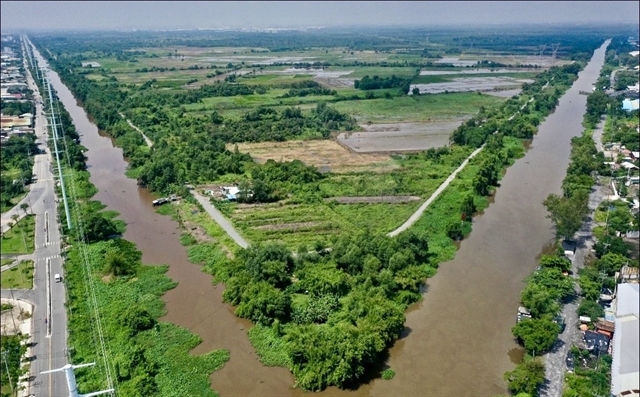 Society
Society

Lung cancer is the second most common cancer in Việt Nam with more than 26,000 cases diagnosed annually and also the second leading cause of cancer deaths among Vietnamese. Mika Sovak, AstraZeneca Global Franchise Head for Lung Cancer, talks to Việt Nam News reporter Minh Phương about new advancements in early diagnosis and treatment for lung cancer patients.
 |
| Mika Sovak, AstraZeneca Global Franchise Head for Lung Cancer talks about “Redefining the future of lung cancer care: An Asia-specific approach.". Photo courtesy of AstraZeneca |
Could you please provide information regarding the current status of lung cancer in Asia?
Lung cancer is one of the most common cancers worldwide. And unfortunately, the burden of lung cancer is in Asia. Around 60 per cent of all lung cancer cases globally occur in Asia, and we learned that patient characteristics, tumour molecular profiles and treatments in this region vary significantly from the Western countries.
Furthermore, we started to notice that a lot of Asian women who are non-smokers are diagnosed with lung cancer. It is different from the typical patient type which is old and smoking men.
In contrast to European countries, there has been a noticeable increase in the number of lung cancer cases and deaths in Asia over the past two decades. In addition, the cases record non-smoking women diagnosed with the disease is also high. What factors have contributed to this trend?
Several factors contribute to the increase of lung cancer in Asia. One significant factor is exposure to environmental toxins, which can have adverse health effects. Environmental factors, such as air pollution and the cooking environment, have the potential to induce disease. For instance, inadequately ventilated cooking areas can lead to the accumulation of toxins, often originating from burning coal.
Furthermore, the prevalence of tuberculosis (TB) and chronic obstructive pulmonary disease (COPD) is notably higher in Asia, particularly in countries like Việt Nam. Many individuals with these conditions have a history of smoking, which further elevates their risk of developing lung cancer.
Additionally, the prevalence of well-characterised genomic drivers differs between Asian and Western populations. Asians have a higher rate of epidermal growth factor receptor (EGFR) mutation. This gene is found in about a quarter of global lung cancer cases, but accounts for as many as 40 per cent of cases in Asia. Importantly, this EGFR mutation is unrelated to smoking and has been identified as a significant contributor to lung cancer among Asian populations.
What are the challenges that Asian countries face in addressing lung cancer?
Lung cancer is indeed a complex disease with multifactorial causes, and there are still significant challenges facing Asian countries in its treatment.
One key issue is limited access to healthcare, including primary care facilities, for many Asian individuals. Often, patients are only diagnosed when their cancer has reached an advanced stage. Regular medical check-ups can make a significant difference in early detection and consequently, improve the feasibility of treatment.
Furthermore, the healthcare infrastructure in many Asian countries may not be adequately equipped to support lung cancer patients. This includes a shortage of essential diagnostic tools like CT scans, which are vital for timely and accurate diagnoses. Access to medications, including advanced treatments, can also be limited, exacerbating the difficulties faced by patients.
The high mortality rate from lung cancer in low- and middle-income Asian countries can be attributed to a combination of these factors, with inadequate access to appropriate treatment being a significant contributing factor. Addressing these issues through improved healthcare access and infrastructure is crucial to reducing the burden of lung cancer in these regions.
What recent advancements have been made in cancer treatment within the Asian region?
Thanks to the development of science, we now have many significant advancements in lung cancer treatment. We now have early detection screening tools for lung cancer which is an advanced procedure known as low-dose computed tomography (LDCT). It can detect very small lesions in the lungs which helps detect cancer more early. In addition, the integration of artificial intelligence (AI) in screening can enhance our ability to identify tumour lesions with greater precision, reducing missing lesions. Consequently, we can diagnose diseases at an earlier stage and with greater accuracy.
In terms of treatment, advances are applied to lung cancer patients at different stages. The targeted therapy for common mutations in lung cancer, including EGFR and HER2, as well as antibody-drug conjugates (ADCs) combined with immunotherapy has been applied in treating the disease. This really just targets the cancer cells and reduces side effects for patients.
Recently, our research results on the efficacy of EGFR inhibitors reveal a promising reduction of recurrence risk by 50 per cent when combined with surgical intervention followed by using new-generation targeted drugs.
How would you evaluate the current state of lung cancer in Việt Nam?
Lung cancer is a prevalent health issue in Việt Nam, with more than 26,000 new cases reported annually. Among all types of cancer, lung cancer ranks as the second most frequently diagnosed and lethal disease. This places a significant burden on Việt Nam's healthcare system.
Around 70 to 80 per cent of lung cancer cases were detected at advantaged stages, but I think this percentage will soon decrease as new treatment methods have been developed and lung cancer screening has also been promoted.
When examining the molecular characteristics of lung cancer in Việt Nam, it is evident that up to 50 per cent of early-stage patients exhibit EGFR mutations, a statistic comparable to other Asian countries. This data plays an important role in helping healthcare professionals tailor treatments, leveraging the potential of new-generation targeted drugs.
What support can AstraZeneca offer in terms of scientific and medical assistance to lung cancer patients in Việt Nam in the future?
So for AstraZeneca Vietnam, we aren’t just bringing the product to the patients but also helping them to diagnose earlier and then help them to live well with the lung cancer.
We have cooperated with the Ministry of Health and Bright Future Fund to initiate the “Love Your Lungs” campaign. In this campaign, we have launched the official website for lung cancer patients named thuongphoi.vn. This is the first-ever website dedicated only to lung cancer patients in Việt Nam. Patients now can access the website and learn everything about lung cancer.
In Việt Nam, AstraZeneca has cooperated with about 10 hospitals across the country to support artificial intelligence (AI) application software on lung X-rays. Along with the integration of AI into Chest X-rays and screening with low-dose CT, we are aiming to improve the diagnosis quality and help the patients diagnosed earlier.
Up to now, the EGFR testing sponsor programme has been implemented by us in Việt Nam for nearly 10 years. This is not only for the patients in late stages but also in the early stages of lung cancer in detecting EGFR mutation for personalised treatment of lung cancer. VNS




